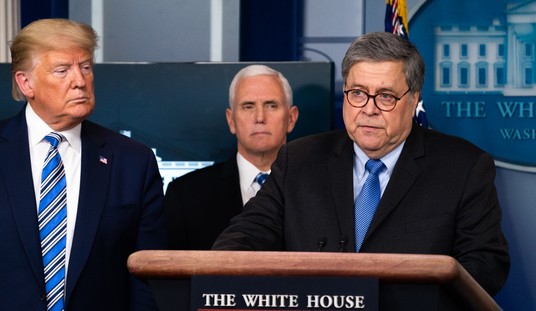According to federal drug czar John Walters, the marijuana available in the United States is better than ever. Well, that's not quite the way he put it, but it's closer to the truth.
Last week, as part of its ongoing effort to convince baby boomers that today's "Pot 2.0" is much more dangerous than the stuff they smoked when they were young, Walters' Office of National Drug Control Policy (ONDCP) announced that "levels of THC -- the psychoactive ingredient in marijuana -- have reached the highest-ever amounts since scientific analysis of the drug began in the late 1970s." The University of Mississippi's Potency Monitoring Project reports that the average THC content of the seized marijuana it tests was 8.1 percent last year, up from 3.2 percent in 1983.
That increase is much less dramatic than the one Walters alleged a few years ago. In a 2002 San Francisco Chronicle op-ed piece, he asserted that "the potency of available marijuana has not merely doubled,' but increased as much as 30 times" since 1974, when "the average THC content of marijuana was less than 1 percent."
Since 1 percent is the threshold at which experimental subjects can detect a psychoactive effect, if Walters were right, it would mean that people who smoked pot in the mid-'70s, when marijuana was even more popular than it is today, typically did not get high as a result. This rather implausible claim is based on a small, nonrepresentative sample of low-quality marijuana that probably degraded in storage.
Worse, to get his impressive 30-to-1 ratio, Walters compared the weakest pot of the '70s to the strongest pot of this decade. As a review of research on marijuana potency in the July 2008 issue of the journal Addiction notes, "There is enormous variation in potency, within a given year, from sample to sample," such that "cannabis users may be exposed to greater variation of cannabis potency in a single year than over years or decades."
Recommended
Even when the ONDCP is comparing annual averages, it's not clear that the government's samples, which depend on whose marijuana law enforcement agencies happen to seize, are comparable from year to year or representative of the U.S. market. Still, it's likely that average THC content has increased significantly during the last couple of decades as growers have become more adept at meeting the demands of increasingly discriminating consumers. The question is why Walters thinks that's a bad thing.
With stronger pot, people can smoke less to achieve the same effect, thereby reducing their exposure to combustion products, the most serious health risk associated with marijuana consumption. Yet the ONDCP inexplicably warns that higher THC levels could mean "an increased risk" of "respiratory problems."
It also trots out warnings about reefer madness reminiscent of anti-drug propaganda from the 1930s, conflating correlation (between heavy pot smoking and depression, for example) with causation. Nora Volkow, director of the National Institute on Drug Abuse, worries that stronger pot might be more addictive, although she concedes that "more research is needed to establish this link between higher THC potency and higher addiction risk."
By contrast, the Australian scientists who wrote the Addiction article say "more research is needed to determine whether increased potency translates to harm for users." Unlike our government, they are open to the possibility that the link Volkow seeks to establish does not in fact exist.
To bolster the idea that marijuana is more addictive today, the ONDCP notes that "16.1 percent of drug treatment admissions [in 2006] were for marijuana as the primary drug of abuse," compared to "6 percent in 1992." But referrals from the criminal justice system account for three-fifths of these treatment admissions, and marijuana arrests have increased by more than 150 percent since 1990.
By arresting people for marijuana possession and forcing them into treatment, the government shows why it has to arrest people for marijuana possession. That's our self-justifying drug policy in a nutshell.
























Join the conversation as a VIP Member